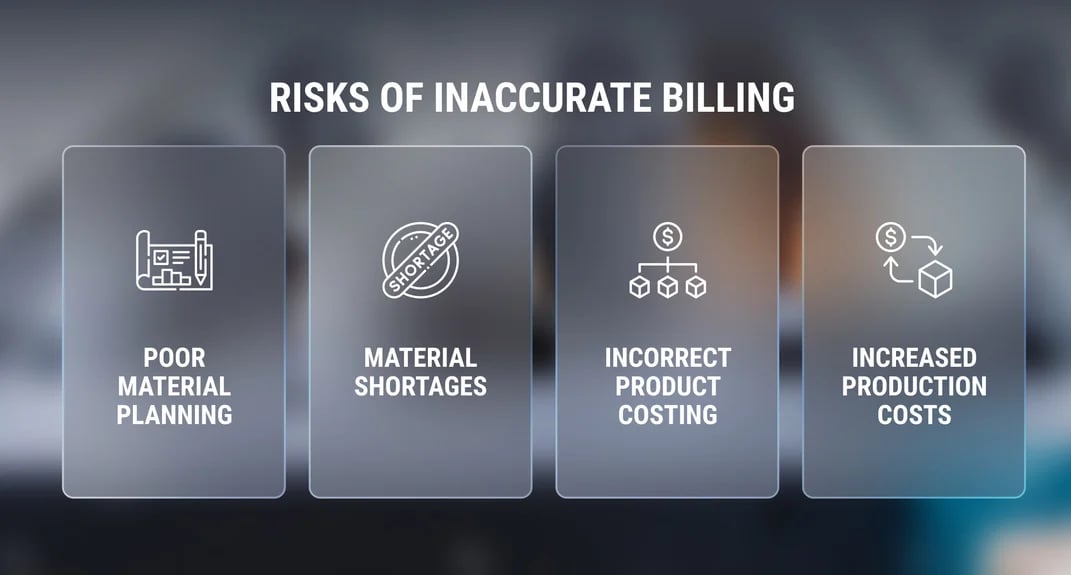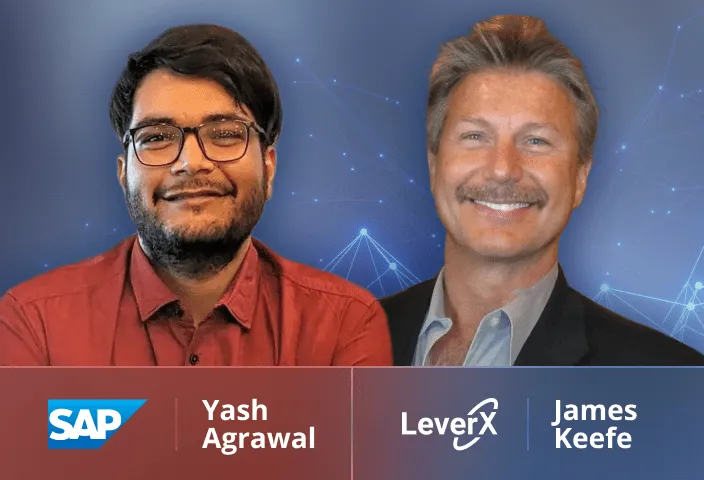Product lifecycle management is skyrocketing in its popularity as it helps to overcome a lot of challenges in manufacturing. Is it a boon for the discrete industry? Check this article to learn more.
Why PLM Is A Lifeboat for Discrete Manufacturers
Recent years have brought much change and turmoil to the discrete industry. Despite all the challenges, GDP growth in manufacturing is predicted at a significant 4.1% for 2022. If you represent an enterprise that wants to move forward and achieve market share, it is vital to stand out rather than fit in. And that's why it's important to use the most state-of-the-art technologies that clearly show customers that you're the bastion of stability in a time of economic uncertainty.
To do that, you can use management tools that help focus on business processes, efficiency, collaboration, and productivity – all in one. In this article, we’ll discuss the benefits and features of SAP Product Lifecycle Management solutions for discrete manufacturing.
The State of the Manufacturing Industry In 2022
The good news is that the manufacturing industry has no sign of a slowdown in 2022. In the year's second quarter, manufacturing production continued growing globally at a stable pace, with a year-over-year growth rate of 3.1 percent among all major subsectors.
However, manufacturers face the effects of the pandemic, which are expressed in labor shortages, and supply chain disruptions. Moreover, the rise of automation changes working roles, which makes product owners optimize their internal communication strategy and increase work efficiency among the frontline workforce. It may become crucial for enterprise executives to adopt new technologies and digital tools for sustainable manufacturing and strong resistance to emerging difficulties.
What Problems Does the Discrete Industry Face In Particular?
Now, entering the manufacturing world requires much attention to detail while understanding the manufacturing process. Supply chain disruption and skills shortages are the biggest concerns across the discrete manufacturing industry, but sub-sectors also have their specific distinct issues. According to Deloitte, the lack of integration across the whole life cycle of production and supply chains may hamper smart factory initiatives for 3 in 5 manufacturers by 2025.
Also, the optimism around revenue growth is held by the expected 2.1 million unfilled manufacturing jobs by 2030. Closing the skills gap requires a significant effort from the manufacturing sector, but not all the areas seem to be directly dealing with this problem.
For example, fabricated metals and machine shop manufacturers are much more focused on the impact of equipment performance/downtime and aligning production schedules with available inventory, while machinery manufacturers are still trying to support staff working remotely. They are also far more concerned with finding new business.
Another challenge discrete industry faces lies in the bill of materials use, especially in a multi-plant environment. It helps to detail the specific items and quantities that are used to assemble the parent item.

Without a centralized system built with lean architecture in mind and providing a new user experience, it may be challenging to define non-stock, bulk, and expense items and notes describing tool requirements. And a software solution already exists that manages available options and product configurations to respond faster to customer demand.
How Product Lifecycle Management Impacts Manufacturing
Manufacturers are shifting from a reactive problem-solving model to a more proactive device, process, product, and plant management model to enhance competitiveness. Being an SAP S/4HANA module created for business process automation, the SAP Product Lifecycle Management solution and the integration of advanced technologies are the most important components of a company's overall success.
What is SAP PLM? In particular, product lifecycle management for discrete manufacturers is a collection of solutions with which you can create and maintain digital product information throughout the enterprise and for the entire product life cycle to manage discrete manufacturing processes. PLM combines the management of product and process data with other applications.

Product lifecycle management software can help an organization manage its product's lifecycle by providing a data warehouse for all the information that affects the outcome. Product development teams can use PLM software to automate the management of product-related data and integrate the data with other business processes, such as enterprise resource planning (ERP) and manufacturing execution systems (MES).
TOP SAP Company
Healthcare data includes multiple patient records, regulatory compliance information, and product specifications. Therefore, it requires stringent security measures and specialized handling protocols. PLM became a single source of truth.
The result?
- 60% time reduction for cycle creation
- 25% more capacity
- Decision control process automation
- IPS-controlled workflows
- One source for specification data
TOP Systems Integration Company
LeverX’s experts blended solid technical knowledge with industry-specific experience. The phase-by-phase approach to product development allowed for the customer’s drastic business process transformation.
The result?
- 35% decrease in customer request turnaround time
- 71% decrease in average months for equipment set up in SAP to first sale (8.3 to 2.4)
- 8% decrease in requests for rework in engineering
- Automated electronic purchase requisitions
- 14 redundant data silos eliminated
Product Lifecycle Management Approach
With enterprise project management advancements, the workflow scenario has changed drastically. Technologies are being regularly upgraded to meet new challenges and trends emerging in the market and to fulfill manufacturers’ expectations.
So, what options do you have if you’re looking to build a sustainable discrete manufacturing process and achieve product excellence? SAP Product Lifecycle Management for the disсrete industry covers all stages of the manufacturing process.
Let’s overview the step-by-step process of product lifecycle management in SAP PLM for the product development team to track and manage product development execution effectively.
1. Ideation
Generating and evaluating new ideas is crucial for addressing the latest industry challenges and finding solutions. The first stage in product lifecycle management involves the support of open & intra-company innovation campaigns and provides transparency on expert evaluations and idea progress within the system.
2. Building concept
Top-down structuring of the product building blocks helps to define the process and know precisely if there are enough resources for any innovations. At this stage, you manage specifications and leverage visualization for further collaboration.
3. High-level product structuring
Defining variants for products and components can take a lot of time and resources, and PLM software helps to calculate all options nondisruptively. The creation of the concept includes an integrated variant configuration and simulation based on a visual overview of differences. Also, conceptualization is supported by change management with the date and parameter effectivity.
4. Product costing calculation
Before launching a new feature or a whole new product, it is essential to keep product costs under control from design to going live. PLM software analyzes and compares different calculations to drive, make or buy, supplier or manufacturing process selection, thus helping make the most impactful decisions. You can create costing structures from engineering, manufacturing, or order BOMs or simple XLS files and automatically pull available pricing information into items from various sources based on pricing strategies.
5. Design planning
With this feature, you can plan project phases, task schedules, and milestones connected with product design. Project-related document management can involve associated risks, and tailor-made software helps to gain visibility across multiple projects and programs.
6. Production and release preparation
Harmonized status management for PLM allows complete integration with an enterprise’s ERP system. Visualize configuration in the embedded viewer and check the Enhanced Engineering Record to support the release process. Moreover, you can always check the status history to indicate the various transitions.
This is how you orchestrate the release process during product development. As an integral part of the S/4HANA business environment, SAP PLM solutions help you to empower business information with measured process information, thus supporting a sustainably continuous manufacturing process.
In a nutshell
S/4HANA includes the most advanced technologies, including AI, machine learning, IoT, and advanced analytics, explicitly designed to address discrete industry challenges and meet the target market’s challenges with solutions. Further SAP PLM integration with Enterprise Resource Planning (ERP) and Manufacturing Execution Systems (MES) allows the creation of an automated system provisioning that includes all software components relevant to discrete manufacturing.
If your enterprise has trouble managing a product lifecycle and you need to eliminate blank spaces throughout all product development from concept to handover, then it's time to invest in PLM software. Contact us today to schedule a demo or consultation with our SAP experts!
How useful was this article?
Thanks for your feedback!



